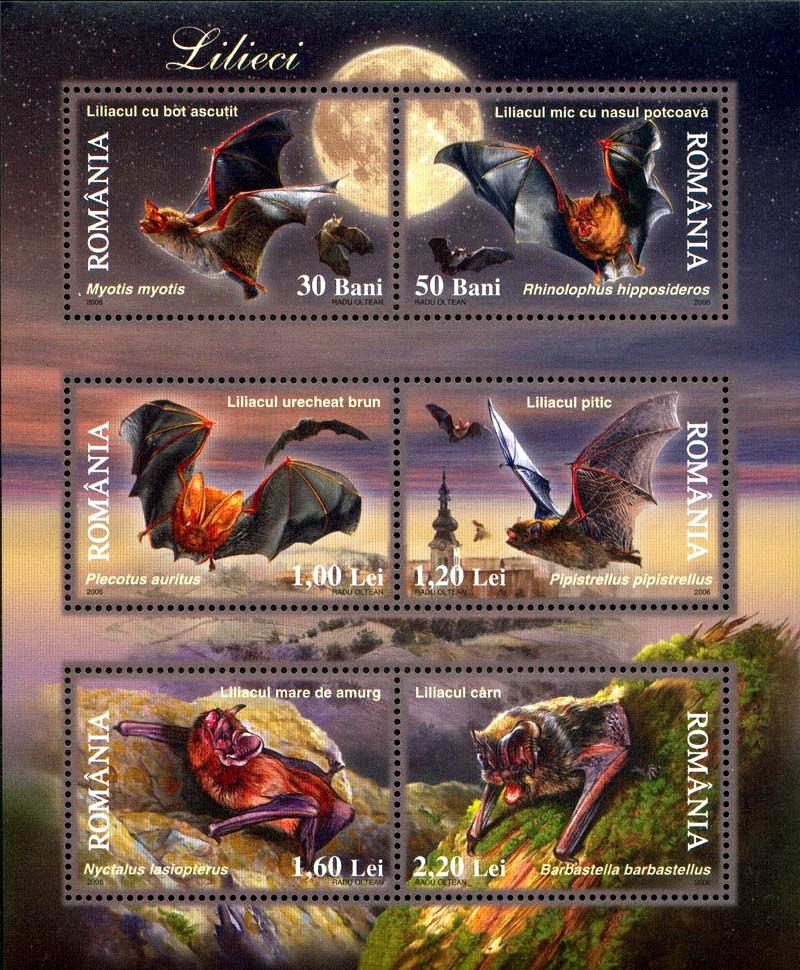| 설명 |
|
greater mouse-eared bat (Myotis myotis), lesser horseshoe bat (Rhinolophus hipposideros), brown long-eared bat (Plecotus auritus), common pipistrelle (Pipistrellus pipistrellus), greater noctule bat (Nyctalus lasiopterus), western barbastelle (Barbastella barbastellus) The bats are (from top to bottom and left to right):
- Greater mouse-eared bat (Myotis myotis)
- Lesser horseshoe bat (Rhinolophus hipposideros)
- Brown long-eared bat (Plecotus auritus)
- Common pipistrelle (Pipistrellus pipistrellus)
- Greater noctule bat (Nyctalus lasiopterus)
- Barbastelle (Barbastella barbastellus).
Romania stamp.
Date 2007
Source http://my-philately.blogspot.ru/search/label/Romania
Author Post of Romania
Source: https://commons.wikimedia.org/wiki/File:Bats_Romania_2003.jpg
The greater mouse-eared bat (Myotis myotis) is a European species of bat in the family Vespertilionidae. Like its relatives Myotis myotis eats various arthropods; however, unlike many bats it does not capture prey by echolocation in flight but instead gleans it from the ground, locating the prey passively.
The lesser horseshoe bat (Rhinolophus hipposideros), is a type of European bat species in the family Rhinolophidae. The species gets its name from its distinctive horseshoe-shaped nose.
The brown long-eared bat or common long-eared bat (Plecotus auritus) is a small Eurasian bat. It has distinctive ears, long and with a distinctive fold.
The common pipistrelle (Pipistrellus pipistrellus) is a small pipistrelle bat whose very large range extends across most of Europe, North Africa, southwestern Asia, and possibly into Korea.
The greater noctule bat (Nyctalus lasiopterus) is a rare bat found in Europe, West Asia, and North Africa. Greater noctule bats are the only bat species to hunt birds on the wing rather than when roosting.
The barbastelle (Barbastella barbastellus), also known as the western barbastelle, is a European bat. It has a short nose, small eyes and wide ears.
|
